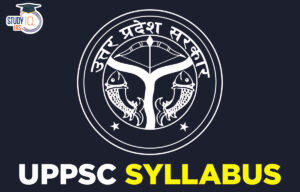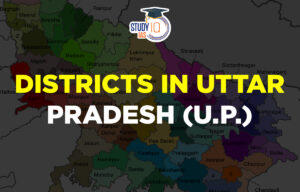Daily Current Affairs for UPSC 2023
Q) Which one of the following reports is not published by the World Economic Forum?
- Global Risks Report
- Chief Economists Outlook
- Global Financial Stability Report
- Global Social Mobility Report
Daily Current Affairs for UPSC – 19 January 2023
Explanation:
- Option (3) is incorrect: The World Economic Forum (WEF) is an international non-governmental organization founded in 1971. First named the European Management Forum, it changed its name to the WEF in 1987 and broadened its vision to include providing a platform for resolving international conflicts. It’s Headquarters are located at Cologny, Switzerland. The Forum engages the foremost political, business, cultural and other leaders of society to shape global, regional and industry agendas. Major publications by WEF are:
- Global Competitiveness Report
- Global Gender Gap Report
- Global Travel and Tourism Report
- Energy Transition Index
- Global IT Report (WEF along with INSEAD, and Cornell University)
- Global Risks Report
- Global Social Mobility Report
- Chief Economists Outlook
- The Global Financial Stability Report is published by International Monetary Fund, it provides an assessment of the global financial system and markets, and addresses emerging market financing in a global context. It focuses on current market conditions, highlighting systemic issues that could pose a risk to financial stability and sustained market access by emerging market borrowers. The Report draws out the financial ramifications of economic imbalances highlighted by the IMF’s World Economic Outlook. It contains, as special features, analytical chapters or essays on structural or systemic issues relevant to international financial stability.
Q) With reference to the National Clean Air Programme (NCAP), consider the following statements:
- It aims to reduce 40 percent of total particulate matter concentration in all cities of India by 2030.
- NITI Aayog has been designated as a nodal agency to monitor the implementation of NCAP.
- A ‘National Knowledge Network’ under NCAP established to aid the State and city level administrations to tackle air pollution in a scientific manner.
Which of the following statements given is/are correct?
- 1 and 2 only
- 2 only
- 1 and 3 only
- 3 only
Explanation:
- Statement 1 is incorrect: A new updated target of 40% reduction in particulate matter concentration in cities covered under the National Clean Air Programme (NCAP) by 2026 has been set. The NCAP covers 124 Non-Attainment Cities (NACSs) wherein National Ambient Air Quality Standard (NAAQS) exceeded for 5 consecutive years, along with 8 other million plus cities of Fifteenth Finance Commission- Million Plus Cities Challenge Fund are covered.
- Statement 2 is incorrect: Under NCAP, Centre level Steering Committee, Monitoring Committee and Implementation Committee has been constituted for timely and proper implementation of the programme.
- Statement 3 is correct: NCAP focuses on preparation and implementation of national level action plan, state level action plans & city level action plans of the targeted cites NCAP has a focus on enhancement of technical and scientific knowledge as well. A National Knowledge Network (NKN) has been constituted with a group of experts from different reputed academic/research institutes of the country. These institutes will help the State and city level administrations in strategizing and taking up measures to tackle air pollution at local levels in a scientific, effective and efficient manner.
Q) Consider the following statements about ‘hybrid immunity’:
- It is more effective than infection-induced immunity.
- The plasma in the blood is primarily responsible to build hybrid immunity.
Which of the statements given above is/are correct?
- 1 only
- 2 only
- Both 1 and 2
- Neither 1 nor 2
Explanation:
- Statement 1 is correct but statement 2 is incorrect: Hybrid immunity is the immunity gained from a previous infection plus vaccines-either the primary doses or both primary and booster doses. A recent study held that “hybrid immunity” provides better protection against severe Covid-19, while all immunity against a re-infection wanes within a few months. The study said that a hybrid immunity offers a “higher magnitude and durability” of protection as compared to infection alone, emphasizing the need for vaccination. The immunological advantage from hybrid immunity arises mostly from memory B cells. In immunology, a memory B cell (MBC) is a type of B lymphocyte that forms part of the adaptive immune system. B lymphocytes are the cells of the immune system that make antibodies to invade pathogens like viruses. They form memory cells that remember the same pathogen for faster antibody production in future infections.
Q) With reference to Spot Bellied Eagle Owl, consider the following statements:
- It is famously known as the ‘Ghost of the Forest’ in India.
- It is endemic to the shola forest of the Western Ghats in India.
- It is classified as ‘Endangered’ under the IUCN Red list.
Which of the statements given above is/are not correct?
- 1 and 2 only
- 2 only
- 1 and 3 only
- 2 and 3 only
Explanation:
- Statement 1 is correct but statement 2 is incorrect: Spot Bellied Eagle Owl is also known as forest eagle-owl. It is mostly found on large trees in thick forests and rocky hillsides, and is known for their distinctive spots on their belly. Spot Bellied Eagle Owl’s habitat is spread across the Indian sub-continent and Southeast Asia. The bird makes a strange scream similar to humans and it is hence called the ‘Ghost of the Forest’ in India and ‘Devil Bird’ in Sri Lanka.
- Statement 3 is incorrect: Spot Bellied Eagle Owl feeds on small rodents and lizards. It is listed as Least Concerned under the IUCN Red list and under the Appendix II of CITES. A team of researchers have stumbled upon a Spot Bellied Eagle Owl (Bubo Nipalensis) for the first time in Seshachalam forest, Andhra Pradesh. Nagarajunasagar Srisailam Tiger Reserve (NSTR) is situated in the deciduous Nallamala forests (offshoot of the Eastern Ghats) of Andhra Pradesh. It attained the status of a Tiger Reserve in 1983 and is India’s largest Tiger Reserve.
Q) Consider the following statements about ‘Indian star tortoise’ and ‘Nature Risk Profile’ (NRP):
- The Indian star tortoise is endemic to the southern states of India.
- The population of Indian star tortoises is decreasing due to decline in their genetic diversity.
- The NRP is launched by the UNEP to check the impact of climate change on biodiversity.
- NRP is based on the Kunming-Montreal Global Biodiversity Framework.
Which of the statements given above are correct?
- 1, 2 and 3 only
- 2 and 4 only
- 1, 3 and 4 only
- 1, 2, 3 and 4
Explanation:
- Statement 1 is incorrect but statement 2 is correct: A study revealed that the Indian star tortoise faces twin challenges of habitat loss and genetic diversity. Indian Star Tortoise is found in three major populations which are located in the western part and the southern part of India, and in Sri Lanka. Reasons for declining genetic diversity of the Indian Star Tortoise are:
- Rampant Illegal Trade made them one of most traded tortoise species not only across the subcontinent but across South and Southeast Asia.
- Unscientific Translocations has resulted in genetic mixing between different populations, posing a challenge in segregating available populations at the genetic level.
- Human-Mediated Habitat Degradation due to increased level of urbanization and agricultural practices has led to fragmented habitat of the species. Indian star tortoise is listed in the Appendix I of the CITES list and as ‘Vulnerable’ in the IUCN and is categorized under Schedule IV of Wild Life Protection Act 1972.
- Statement 3 is incorrect but statement 4 is correct: The UN Environment Programme and S&P Global have launched the Nature Risk Profile to analyze companies’ impacts and dependencies on nature. The Nature Risk Profile is aimed at enabling the financial sector to measure and address nature-related risk by providing scientifically robust and actionable analytics on nature impacts and dependencies. The launch of the Nature Risk Profile methodology follows on the adoption of the Kunming-Montreal Global Biodiversity Framework, in December 2022. The potential impact of the Nature Risk Profile methodology is significant, transforming the parameters of financial decision-making.


 UPPSC Syllabus 2024, Check PCS Prelims a...
UPPSC Syllabus 2024, Check PCS Prelims a...
 World Liver Day 2024, Theme, History, Ce...
World Liver Day 2024, Theme, History, Ce...
 List of Districts of Uttar Pradesh, Map,...
List of Districts of Uttar Pradesh, Map,...

















